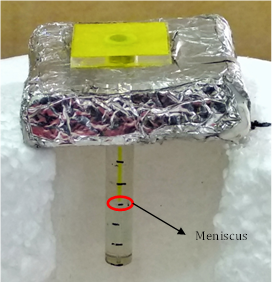 The Indian Institute of Science (IISc) scientists developed a new device that could measure the evaporation rate of a local area in a few minutes. Compared with the existing methods, the device is a more efficient and inexpensive way to measure evaporation. The device would be beneficial to farmers gauging requirements for their fields, weather stations to characterize the local atmospheric condition, and especially to botanists and scientists studying the process of transpiration in plants because of its ability to measure the evaporation rate over small areas over short periods of time.
The Indian Institute of Science (IISc) scientists developed a new device that could measure the evaporation rate of a local area in a few minutes. Compared with the existing methods, the device is a more efficient and inexpensive way to measure evaporation. The device would be beneficial to farmers gauging requirements for their fields, weather stations to characterize the local atmospheric condition, and especially to botanists and scientists studying the process of transpiration in plants because of its ability to measure the evaporation rate over small areas over short periods of time.
Stomatal responses can also now be presented in a better and more controlled manner, using this device. Moreover, it could be used in oceans to study changing evaporation trends in the open sea and in weather stations to estimate evaporation rates in the atmosphere, an important parameter that is currently not measured.
The proposed device consists of a filter paper connected to a capillary tube that draws water from a reservoir to the filter paper, thereby moistening it and thus simulating an evaporating water surface. The evaporation rate is determined by calculating the distance travelled in the capillary tube by the lower meniscus over a couple of minutes.
The breakthrough is that the very small amount (about 1 microliter) of water lost from evaporation from the surface in a minute can be measured, thus giving an idea of evaporation rate even from a small leaf. In addition, this device could show the evaporation rate within a niche environment, as a series of factors including temperature, wind speed and moisture influence the evaporation rate.
“Our method allows you to get a much more realistic measure of transpiration from plants and evaporation from soils,” opined Jaywant H Arakeri, Professor - Department of Mechanical Engineering, IISc, and Senior Author of the study recently published in the Journal of Hydrology. Further speaking on commonly used pan evaporimeters, he asserted, “The disadvantages [of existing methods] are that the evaporation rates are for one whole day, and over a large area (1 sq mt). And one needs an open ground to place the device. But we have a simple method of directly measuring evaporation from a small surface – at the order of a couple of centimeters, and over a short period of time.”
For more information: www.iisc.ac.in